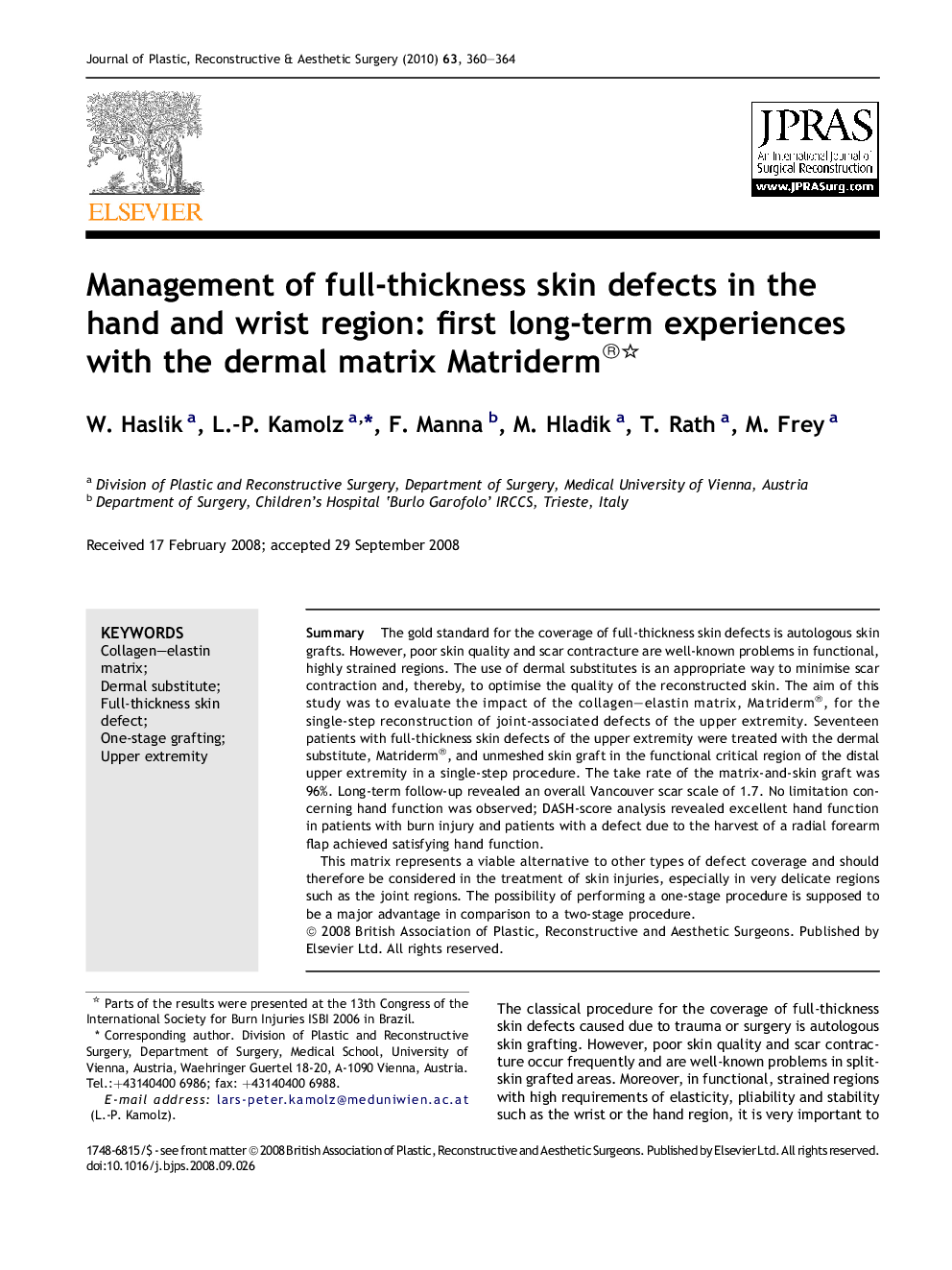| Article ID | Journal | Published Year | Pages | File Type |
|---|---|---|---|---|
| 4120184 | Journal of Plastic, Reconstructive & Aesthetic Surgery | 2010 | 5 Pages |
SummaryThe gold standard for the coverage of full-thickness skin defects is autologous skin grafts. However, poor skin quality and scar contracture are well-known problems in functional, highly strained regions. The use of dermal substitutes is an appropriate way to minimise scar contraction and, thereby, to optimise the quality of the reconstructed skin. The aim of this study was to evaluate the impact of the collagen–elastin matrix, Matriderm®, for the single-step reconstruction of joint-associated defects of the upper extremity. Seventeen patients with full-thickness skin defects of the upper extremity were treated with the dermal substitute, Matriderm®, and unmeshed skin graft in the functional critical region of the distal upper extremity in a single-step procedure. The take rate of the matrix-and-skin graft was 96%. Long-term follow-up revealed an overall Vancouver scar scale of 1.7. No limitation concerning hand function was observed; DASH-score analysis revealed excellent hand function in patients with burn injury and patients with a defect due to the harvest of a radial forearm flap achieved satisfying hand function.This matrix represents a viable alternative to other types of defect coverage and should therefore be considered in the treatment of skin injuries, especially in very delicate regions such as the joint regions. The possibility of performing a one-stage procedure is supposed to be a major advantage in comparison to a two-stage procedure.
